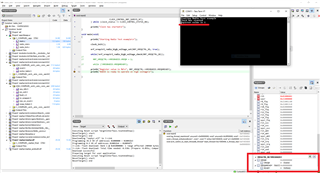Hi team,
I am working with the nRF5340 PDK v0.8.0 and I am trying to request the additional voltage for the VREGRADIO to support the additional 3 dB TX power on the RADIO. I am using the radio_test example in the SDK (nrf\samples\peripheral\radio_test) for this. To facilitate this, the only changes I made were to the main.c file as seen below. Is this the correct way to request the higher voltage? When debugging I am not seeing the bit value in the register change but I am printing out the correct value of the register (see screenshot below).
Unfortunately, I do not have the proper RF equipment to measure the extra 3 dB change in output power. I only have the RSSI Viewer with the nRF52840 Dongle which doesn't look to be changing from having this to not having this.
Added:
Also some printk statements. Here is my final main.c file:

Regards,
Akash Patel
